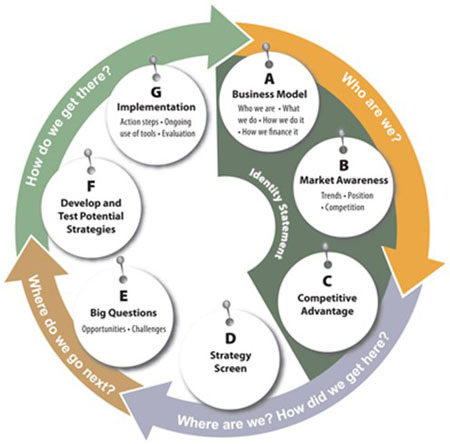Are NPOs fighting to stay relevant?
The main reason why a nonprofit organization would join the United Way is because the UW allocates money to its member agencies. So if the United Way of Kansas City has decided to allocate $39,043,234 (2010 990 Form) to the 116 member agencies, each organization will receive a piece of the pie. In 2010, the recipients of the largest (United Way Kansas City) grants were the American Red Cross ($1.5 million), Family Conservancy ($1.1 million), and the YMCA ($1.1 million) whereas the smallest (UWKC) grants went to Belton School District ($5,200), Harrisonville NETT ($5,243), and Hope Haven ($5,292). The disbursement of funds is decided by
So by being a member agency of the United Way you could potentially receive quite a bit of funding, but (hopefully) organizations are demonstrating that they are operating responsibly and are committed to achieving results in the org’s mission.
Chasing the money
NPOs are not exempt from corruption. What’s to stop an organization from doing just enough to convince the United Way that they are deserving of the money? Is it even important whether or not an organization is effective in accomplishing their mission, so long as they can prove to the issuer of grants that they are deserving of the money? Sadly, the answer depends on who you are asking. The United Way agencies can even become protective of their ‘sugar daddy’. Consider a town with 30 UW member agencies that has for the last 10 years remained fairly constant. If a new organization enters town boasting claims of higher efficiency and better results- those 30 organizations must step up their game to achieve comparably levels of return on investment if they want to continue receiving their accustomed monthly stipend. Instead of meeting the challenge, forming new partnerships, sharing resources, and increasing collaboration to meet the new expectations, it would be much easier to gripe and complain and even try to sabotage the more successful organization. Human nature is to be protective. According to Fundraising Strategies and Challenges Of Nonprofit Organizations:
The findings in Barman’s article suggest that competition may have important effects at the level of the field. The pressures of competition incite nonprofits to adopt the exact opposite strategic response. Organizations seek one another to identify and fill different roles. Nonprofits may attempt to construct a hierarchy of comparison so they come out on top and an organizational field will exhibit diversity across its organizational members. The field will be one in which nonprofits are constantly negotiating and positioning themselves in relationship to each another.
How then can we incentivizenonprofits to be successful?
Being the best
NPOs have to market themselves. Many organizations within the same geographic area are in fact doing the same things. How can a person wanting to support a good cause know where their time/money will go the furthest? It’s overwhelming. And choosing wrongly could result in a damaged perception of NPOs in general potentially leading that person to be less likely to get involved in the future. Perhaps the organization with the best marketing strategy will win the donor’s heart. How can we really know which organization is the best?
Competition drives innovation and motivates us to be better. But only if we look at it that way. Consider how competition helps businesses and now lets apply this same way of thinking to nonprofits.
A sustainable approach
Robert Egger is one individual who is advocating for a 21st century model of social enterprises for charitable organizations. The DC Central Kitchen which he started in 1989, “prides itself on being “more than a soup kitchen” and invites homeless people, former felons and other struggling individuals to learn how to prepare food in a working environment to give them the skills necessary to find employment. Nightclubs and restaurants donate excess food to supply the organization.” So rather than just being another soup kitchen, this operation is sustainable in that the employees are formerly homeless individuals who are now learning employment skills and the food comes from a free resource as well: leftover food that would have otherwise been thrown away. Genius!
Another cool social enterprise is the Recycletronics Recycling Program in Georgia. The program provides jobs to people with disabilities. A growing problem in the area was the abundance of outdated electronics that were ending up in landfills because they were too costly to properly recycle. So the Tommy Nobis Center opened up a new business to recycle these materials. Individuals and businesses donate used computers, tvs, cell phones, and other electronics to the center. The center has recycled over 55,000 pounds of electronics and has created 13 jobs for youth and adults who otherwise would be considered unemployable.
Conclusion
The not-for-profit world is exceedingly challenging. Not-for-profits and businesses alike must concern themselves with issues of money and competition. Nonprofits, rise to the occasion and reinvent yourself with an innovative and sustainable approach to change the way we look at problems!
Sources
Asserting Difference: The Strategic Response of Nonprofit Organizations to Competition. Emily A. Barman, Social Forces. Vol. 80, No. 4 (Jun., 2002), pp. 1191-1222
